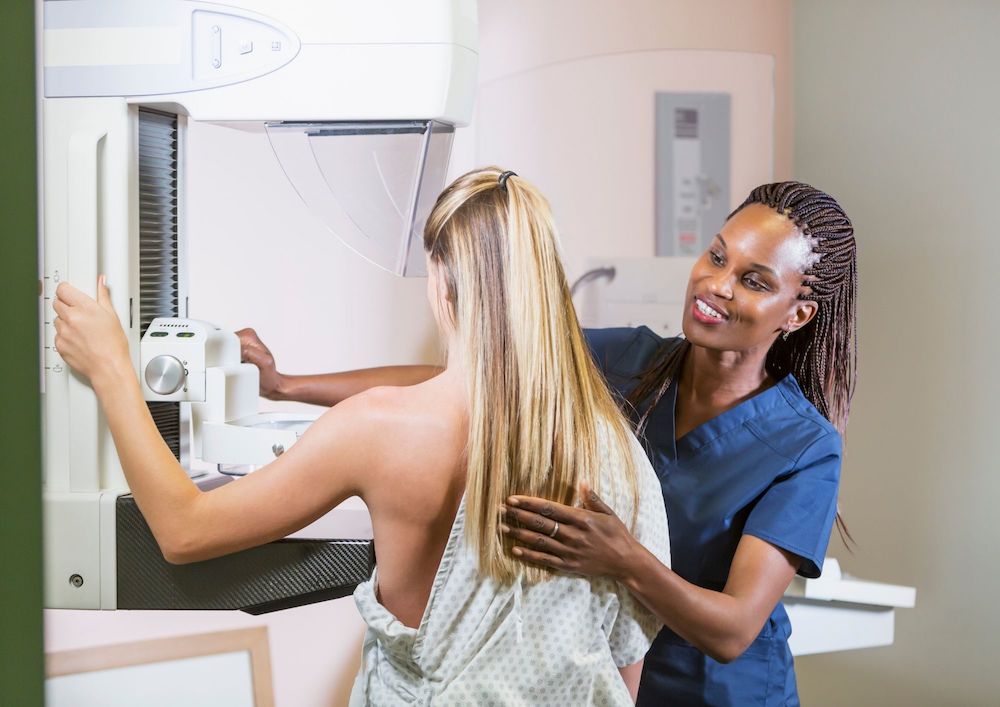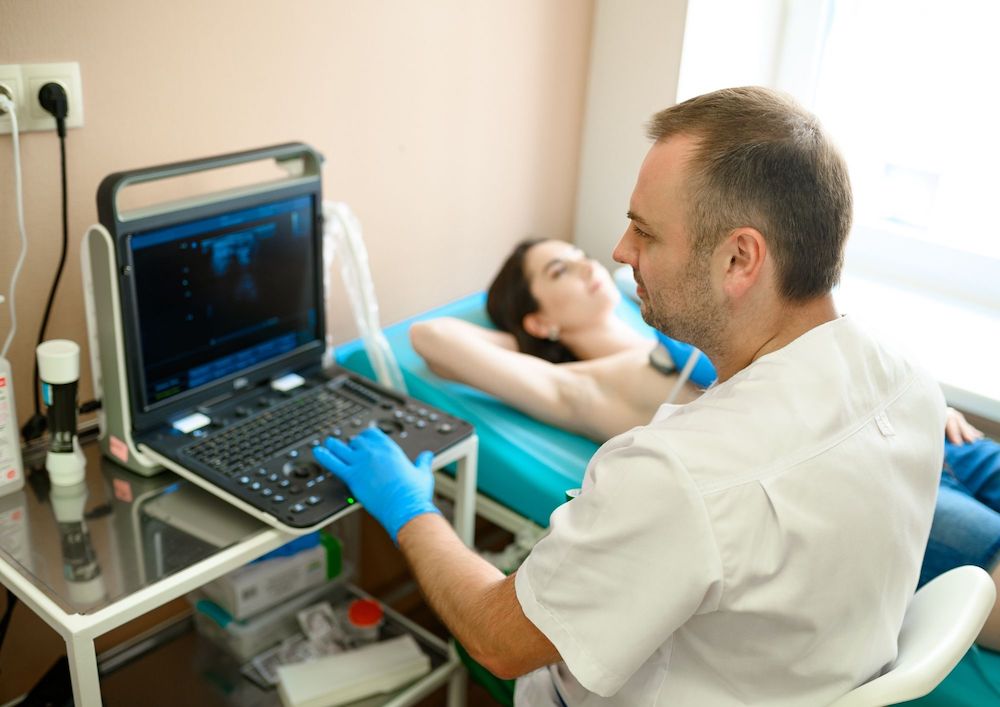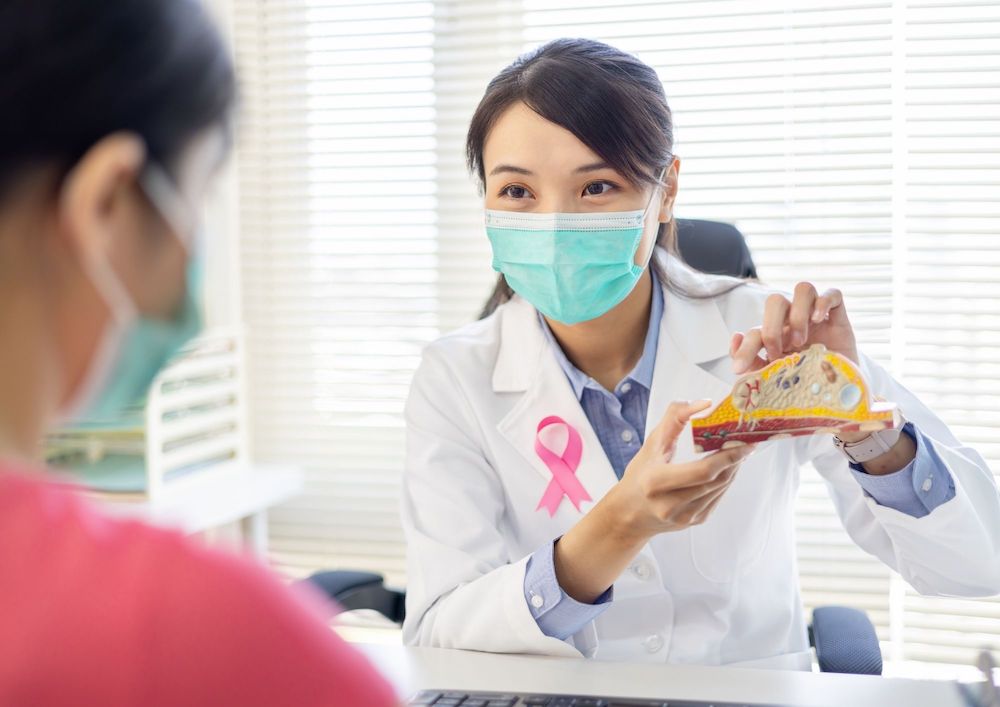You’re in front of your dresser and your hand runs through your chest. You feel something and just to be certain, you touch your breast again and this time, you’re sure that you felt a lump. Most women self-examine their breasts and once they find a lump, they freeze. Now the question is, what do you do when this happens?
First and foremost, don’t panic. Research shows that 85% of breast lumps are benign, which means they are noncancerous, especially in women who haven’t yet hit 40. Women over 40 are normally encouraged to have regular mammograms and if those mammograms always turn negative, the odds are even higher that the lump you felt isn’t cancerous.
According to most obstetricians, before a palpable lump appears on a woman’s breast, something will already have been detected during a mammogram screening. Despite most women knowing this, the worrying and stress it has not stopped anyone from worrying once they feel a lump. The only way to be sure is to differentiate between a benign lump and a breast cancer lump.
Understanding your breasts
Your breasts consist of fat, blood vessels, nerves, glandular tissue, fibrous connective tissue, ducts, and milk-producing lobules. All these make your breasts quite lumpy. The major difference between a benign lump and a cancerous lump is that a benign one is fluid-filled and rolls between your fingers. A cancerous lump is normally hard and feels stuck in one place.
The other difference has to do with pain. Breast cancer, in most cases, doesn’t cause pain. Inflammatory breast cancer is an exception to this, as it comes with symptoms of aching or burning in the breast. Benign conditions might also be accompanied by painful symptoms, but at times, this isn’t the case.
The only sure way to know the nature of a breast lump is via medical tests such as a mammogram, fine needle aspiration, or ultrasound. These tests should be done at a medical facility that has all the equipment and with experts who can read the results.
 Understanding the tests
Understanding the tests
What is a mammogram?
An X-ray examination of the breast is referred to as a mammogram. It is a process used to detect breast diseases or any breast problems, such as nipple discharge, lumps, or pain. This procedure enables the detection of benign tumors, cysts, and breast cancers before they can be detected via touch. All women are encouraged to frequently do a mammogram, whether or not they have breast health-related issues.
There are factors or conditions that may affect your mammogram results, such as
- Having had a previous breast surgery
- Hormonal breast changes
- Deodorant, lotions, creams, or talcum powder applied on breasts or under the arms
- Breast implants; these prevent the complete visualization of the breast area, hence hiding tissue
You should inform your medical examiner if any of these apply to you so that they can make the required preparations.
How to prepare yourself for a mammogram
The first thing is scheduling a date for the mammogram. It is advisable to do this two weeks before your period starts because breasts do become tender a week before and during menstruation. Once again, if you have breast implants, please notify the facility when scheduling the exam.
Expectant mothers or those who think they might be pregnant should consult a medical doctor before scheduling a mammogram. Discuss all options with your doctor. If you are breastfeeding, you should mention this to the mammography technician.
Avoid using lotion, perfume, deodorant, or powder on the day of the examination. Note that you’ll have to remove clothes from the waist up, so wear something that you can easily get out of. It is also advisable to leave all jewelry and valuables at home. The health care provider or technologist will request other specific preparation based on your medical condition.
What is a fine-needle aspiration or FNA?
There are situations where a mammogram can’t prove that a certain body area is cancerous even though there are high chances that it is. In such situations, the tissue will be extracted via a needle for biopsy. The tissue will then be scrutinized under a microscope to determine if it is cancer or not.
FNA is just one of the several breast biopsy procedures as the type of biopsy done depends on the size and location of the breast lump.
How to prepare yourself for a biopsy
The entire procedure should be explained to you by the technologist and you should ask all the questions you might have. A consent form will be provided, but you should go through it carefully before signing anything. Once again, seek clarification on points that you don’t understand.
If your breast is numbed using local anesthesia and you are awake, then you don’t have much preparation. If general anesthesia will be used to put you into a deep sleep, then you will have to fast before the surgery. Your surgeon will explain everything before the procedure.
Once again, apply nothing to your breast or underarms. Inform your healthcare provider if you suspect you could be pregnant or you are pregnant. You should also inform them of any allergies. Perhaps you could be allergic to latex or anesthesia. You should also let them know if you are on any medication or taking supplements. This is also the time to say if you have a history of bleeding disorders.
Since you will be drowsy and groggy after, ensure that someone is on standby to drive you home.
 What is an ultrasound?
What is an ultrasound?
When sound waves are used to examine your breasts, we refer to the method as a breast ultrasound. It will help the medical examiner spot any issues and also see how well blood flows to your breast areas. Ultrasounds are normally used when there is a change that fails to show up in a mammogram.
A breast ultrasound is not normally used to detect breast cancer, the reason being that it may fail to detect some early signs. For example, one early cancer sign it might not detect is micro-calcifications, which are small calcium deposits. So in what cases are an ultrasound method used?
- When the breast tissue is really dense and the mammogram cannot see through it.
- When pregnant. Ultrasound doesn’t make use of radiation like mammography.
- You are below 25 years of age.
- When there is a need to look at the surrounding lymph nodes. This is essential when removing cyst fluid or guiding a needle during a biopsy.
- The health provider may recommend other reasons.
How to prepare yourself for an ultrasound
Your healthcare service provider should explain the entire procedure to you. Don’t be afraid to ask all the questions that you may have. There are situations where you might be given a consent form to sign before the test. It is important that you go through the form carefully and ask for clarification when something is not clear.
There is no need to stop eating or drinking before the test. Just relax and please, don’t take any medicine for it. Breathe easy. Once again, avoid putting lotion, deodorant, or any other substances on your breasts that day. You should also wear clothes you can easily take off and that allow the technologist to easily examine your chest area. Some gel will be applied to your skin during the test. Follow any other instructions as required during the test.
Information is power, so when you feel a lump on your breast, seek medical advice as ll breast lumps should be evaluated by a medical professional. Once the cause of the lump is established, treatment can begin. So, finding a lump on your breast is not always a cause for alarm, it is a cause for taking the right action.
If you’d like to help make a difference in the lives of women experiencing breast cancer, you can volunteer with us a Pawsitively 4 Pink or make a small donation.


